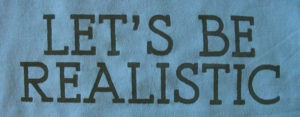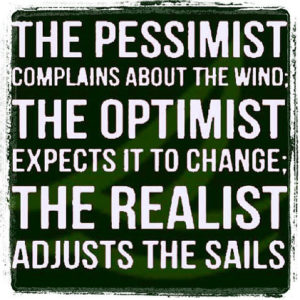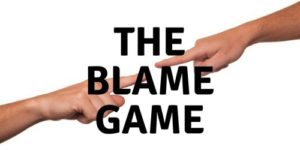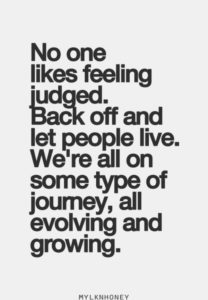Perception is reality. Is yours accurate as it relates to your pain?
I wrote a blog not too long ago about being honest about our pain and suffering, be it emotional or physical. It was called, If you’re in pain, don’t “be positive.” Be honest. You can read it by clicking here. I want to add a bit more to try and shed light on better coping with the many facets of a chronic health condition (in my case, a neurological movement disorder called dystonia), and basically, life in general, which is often filled with great pain and suffering at different times.
In her book, After the Diagnosis, Dr. JoAnn LeMaistre describes 2 approaches to the experience of serious illness: (1) a Pollyanna approach that denies altogether that there has been a real trauma, and 2) a gloomy perspective of resignation, self-denial, and helplessness. Both perspectives distort the reality of illness and/or trauma. The Pollyanna viewpoint holds little reality and the resignation viewpoint holds little hope.

The Pollyanna approach is typified by personal stories or testimonials of complete recovery from extreme illness or disabling conditions. These stories tug at the heartstrings and really catch people’s attention. I know people who do this. They have short lived improvement in symptoms or life circumstances and they shout to the world how wonderful they feel or how amazing something worked for them, and not long after, they resort back to their suffering. Never having given the improvement/change enough time to know if it was temporary or permanent, the emotional high and glorious message to the world is based on little evidence.
Besides creating false hope to others by overplaying the likelihood of complete recovery or a miraculous result from a particular treatment, these stories underplay the sadness and feelings of hopelessness that are part of physical or emotional trauma for many. This is what my first article mostly focused on and why I called it, If you’re in pain, don’t “be positive.” Be honest. This article was published in the National Pain Report.
I chose this title and topic because too many people I know deny the existence of their suffering and pretend that everything is better than fine, when it is far from fine. This distortion of reality intensifies their suffering (usually behind the scenes) and it gives false hope to others who are suffering. It gives unrealistic expectations which creates a rush of hope and then a crash of disappointment when people don’t see the same improvement others claim to get. The Pollyanna approach can set people up for a crash and burn.
That being said, as you will see in most of my writings, I am all for being optimistic and hopeful (and even having a general overall Pollyanna outlook because it helps us see the silver linings in life), but it is based on reality and not false hope, or merely words such as, “just be positive.” Having a positive attitude must be attached to a positive experience for one to have hope. It can also be based on life stories from others who have truly found measurable change that is sustained. This offers real hope to others that they too can get better from whatever ails them.

The second perspective LeMaistre describes in her book views a person as a failure. This is the patient who does not respond to modern medicine and the lack of recovery is perceived as the patient’s fault. I know countless people who have been told by others that their health problem is their fault. This attitude of blame accounts for some of the worst psychological abuses of patients by health practitioners, caregivers, and loved ones, often typified by statements such as, “stop complaining. It can’t be that bad” and “just get over it.” The result is often shame and isolation. I have heard things like this from many people from all walks of life, from doctors to family to friends to mere acquaintances. It caused a lot of anger and resentment.

I recall a conversation with someone who said he had heard from someone else that dystonia plateaus around the 5-year mark and then patients proceed to get better. First of all, I am still not sure what it means to plateau, as most people I know have symptoms that ebb and flow for any number of years and/or get worse or better over no set period of time. It is a very individual thing based on many dynamics. The concept of hitting a plateau with dystonia should be thrown out the window because for most people it is not true from all I have read, personally experienced, and heard from most others with dystonia.
He then said in an accusatory way, “so, it has been over five years, Tom. Why aren’t you better?” This lack of understanding made me feel even more alone than I already was. It took me a while, but I was finally able to dismiss the conversation and forgive this person. There was no reason for me to hold onto the anger I felt. By doing so I was only hurting myself. This person simply did not know what he was talking about; nor did the person he heard it from, so being angry was pointless. I just chalked it up to misinformation and moved on, educating those who chose to listen.

As difficult as it can be, we have to take power back. We can’t blame others for making us feel a certain way because no one makes us feel anything unless we to let them. How we feel is 100% our choice. Opinions from people are going to be there no matter what we do in life. More often than not, this is about the other person not knowing what to say or do, or because they are wrapped up in their own issues, making it too difficult to be there for us the way we want.
We all desire to be understood by others, and maybe this starts with us understanding that no one can ever be fully understood. This might be a better mindset, rather than getting angry at people who do or say things that doesn’t acknowledge us and our suffering. As much as others may fall short of what we want and maybe expect, being there for ourselves is first and foremost.
To sum up this article, I wanted to share this short story about perception:
“A married couple moves into a new neighborhood. The next morning while they are eating breakfast, the woman sees her neighbor hanging the washing outside.
“That laundry is not very clean,” she said.
“She doesn’t know how to wash correctly.
Perhaps she needs better laundry soap.”
Her husband looked on, but remained silent.
Every time her neighbor would hang her wash to dry, the woman would make the same comments.
About one month later, the woman was surprised to see a nice clean wash on the line and said to her husband:
“Look, she has learned how to wash correctly. I wonder who taught her this.”
The husband said, “I got up early this morning and cleaned our windows.”
And so it is with life. What we see depends on the purity of the window through which we look!”
________________________________

Tom Seaman is a Certified Professional Life Coach in the area of health and wellness, and the author of 2 books: Diagnosis Dystonia: Navigating the Journey (2015) and Beyond Pain and Suffering: Adapting to Adversity and Life Challenges (2021). He is also a motivational speaker, chronic pain and dystonia awareness advocate, health blogger, volunteer for the Dystonia Medical Research Foundation (DMRF) as a support group leader, and is a member and writer for Chronic Illness Bloggers Network, The Mighty, Patient Worthy, and The Wellness Universe. To learn more about Tom, get a copy of his books (also on Amazon), or schedule a free life coaching consult, visit www.tomseamancoaching.com. Follow him on Twitter @Dystoniabook1 and Instagram.



























Tom I begin by making you aware that I’m talking this message so if anything comes out grammatically incorrect or misspelled please forgive. Your article was poignant. People often view the world around them incorrectly. I am passionate about your entry as my eighty-year-old mother passed away last Saturdat. The person who adopted her beat her horrific Lee I said the person because the person does not deserve the title of mother mother implies love caring nurturing tenderness comfort confidant godly. A mother’s love is one of the greatest gifts a child can receive a Father’s Love is equally as important however the second person that adopted her does not deserve the title the father as he allowed the abuse to take place. my mother had one of the most beautiful hearts I’ve ever witnessed she loved people with passion that goes beyond understanding she would give everything she had to help anyone in need even though many people repeatedly took advantage of her. my mother became addicted to pain prescription pain medicine a long long time ago people without a clue judge my mother. Tom thank you for your words and this entry pain does come in many many forms whether it be emotional physical mental pain is monumental to the person who is experiencing it if a person does not exhibit signs of physical deformity or a broken bone or loss of hair due to radiation treatment or chemotherapy and so on people often judge the person as quote-unquote making it up there just feeling sorry for themselves well trunews flash people should not be so quick to judge actually it’s not right for others to judge at all if someone says they’re in pain how about offering love how about offering kindness how about taking time to cleanse a lens from which they look there is so much beauty in the world there are people lovely lovely lovely people who have been emotionally devastated. I do not understand why my mother had to go through so many hellish horrific times in her life that I do know through it all she kept love and compassion in her heart and unlike the people who judged her when she looked at other she judged no one. May God help us to encourage one another and build each other up and offer a helping hand may God help us to view others through clean sparkly windows.